Just south of Greenock, in Inverclyde, western Scotland, is a derelict business park called Spango Valley, and an associated closed railway station. It’s just off the main road, and is a great example of the sort of industrial heritage I find fascinating. If you’re that way way inclined, it makes an easy introduction to urbex.
What is Urbex?
Urbex, or Urban Exploration, is the act of visiting and exploring places in urban settings, rather than climbing hills or biking through the countryside. However, more specifically, it’s taken on the meaning of exploring derelict and abandoned places in urban or suburban areas. Popular places for urbex include abandoned factories and warehouses, ruined houses, abandoned railway lines, and unfinished building projects. Visiting Chernobyl and Pripyat is a form of urbex, as are my wanderings through the remains of collieries in Kirkby-in-Ashfield.

Dead railway line that once served a coal mine in Kirkby-in-Ashfield.
This blog post is not encouraging you to break the law in any way; stay responsible. What I will say, however, is sometimes the lines are vague. This is especially true of somewhere like Spango Valley and the associated railway station, because they would have been nominally publicly accessible when ‘live’.
What was Spango Valley?
Spango Valley lies just south of the A78, the main road along the western coast of Inverclyde and North Ayrshire, where the Gourock / Greenock urban area meets the hills. There is a small stream here and a couple of farms lie up the valley sides. Despite its name though, it’s mainly known for an out of town business park.
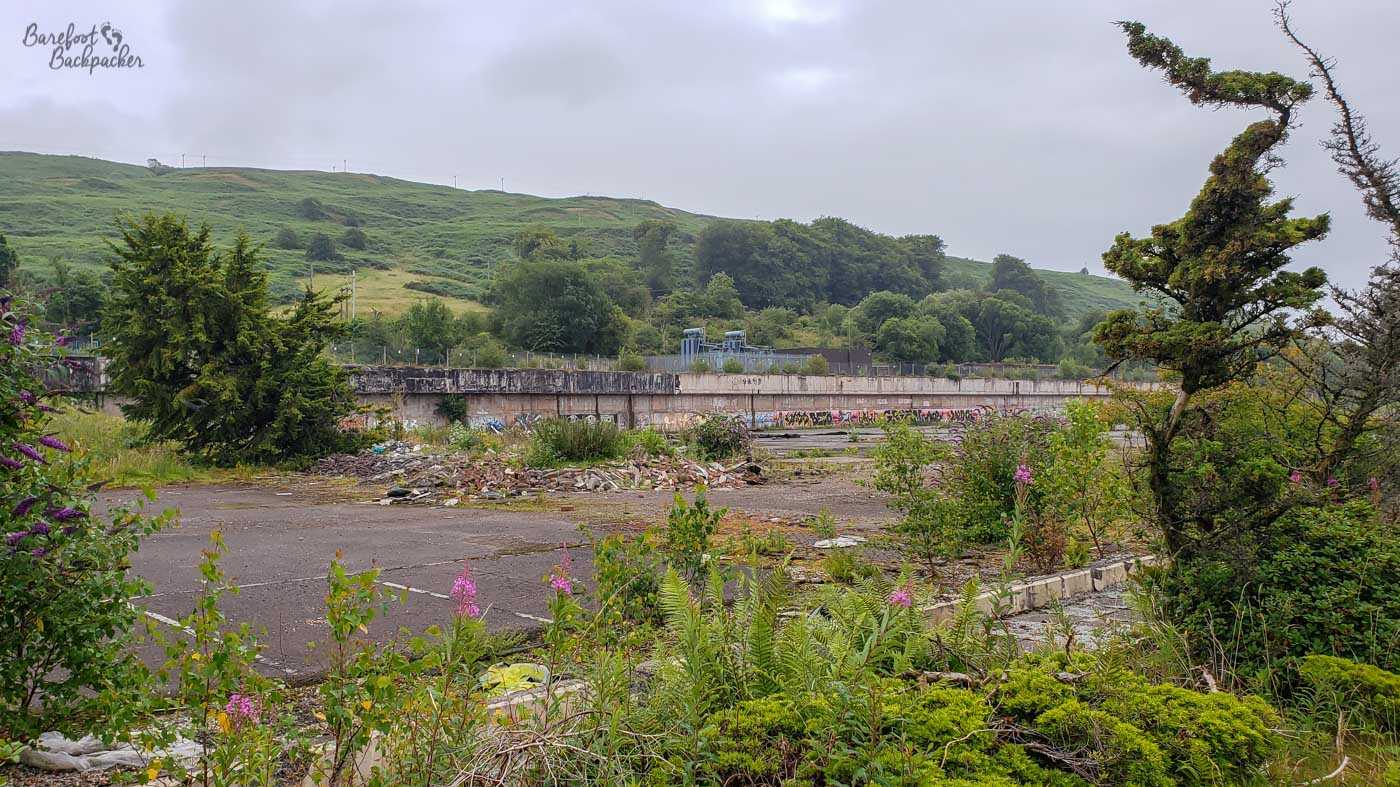
A car park in the Spango Valley Business Park
It even had its own railway station on the Glasgow-Wemyss Bay line.
What was IBM Halt Railway Station?
IBM Halt, later simply IBM, is, or was, the railway station that served the Spango Valley Business Park. It opened in 1978, and was always an unusual stop. There’s a handful of similar stations around the country, including Lympstone Commando (in Devon) that serves a Royal Marine training centre, and Stanlow and Thornton (in Cheshire), which serves an oil refinery. Public access to these stations is technically possible but generally unlikely since there’s no actual reason to, and the access paths or roads are generally within the confines of the complex they serve. This station was known as IBM Halt because at the time of opening, the majority of the business park was owned by IBM.
When it was opened, its existence wasn’t acknowledged in timetables or station announcements. Trains stopped there but, in a way, it wasn’t an ‘official’ railway station, and it was only used on peak-hour services by those who worked there. It was eventually publicly acknowledged in 1986, and even given a full hourly all-day service, but even then it wasn’t a station you used unless you had to, It was kind of an outlier of a station – a liminal place, in a sense.
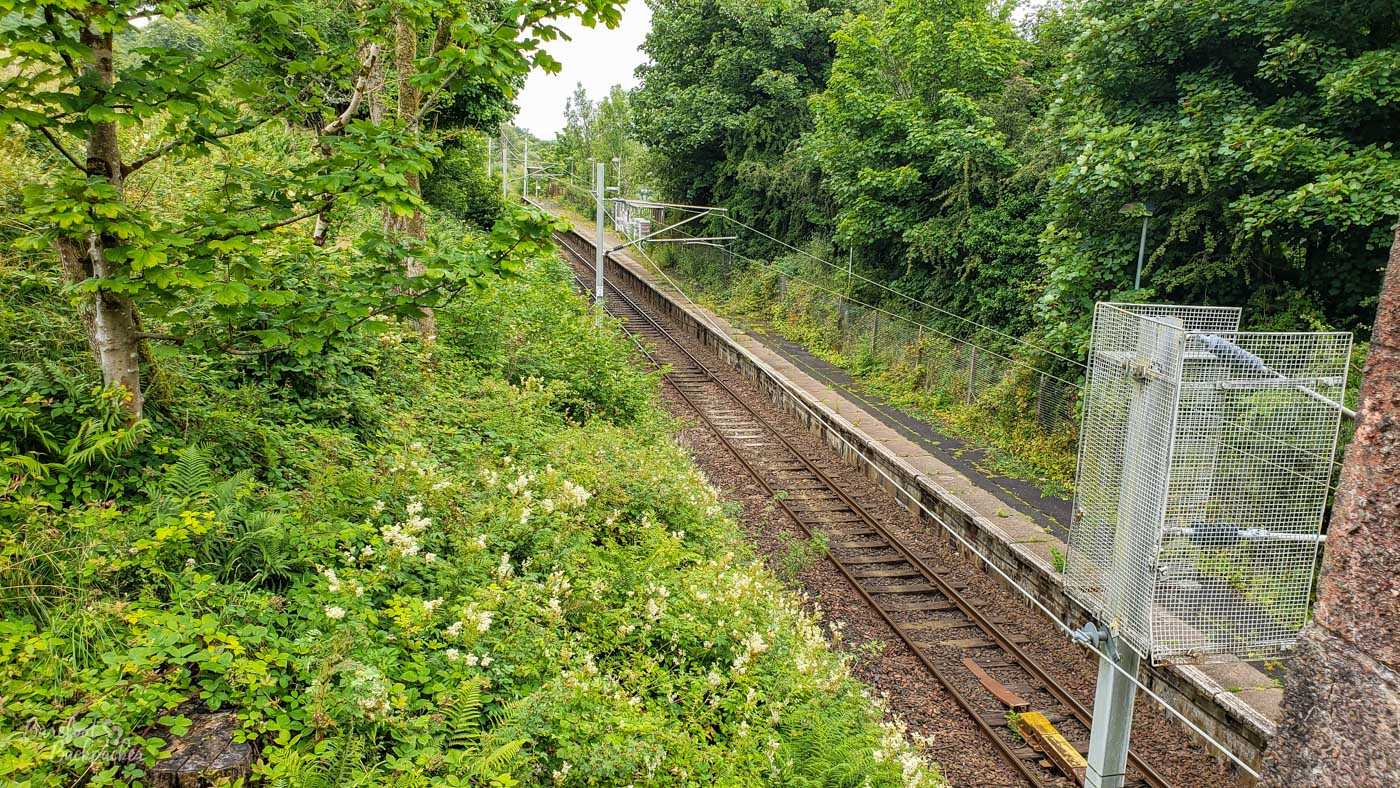
The remains of IBM (Halt) Railway Station; itself still pretty clear
What remains at Spango Valley?
Throughout the 2010s IBM slowly moved out, relocating to the east of Greenock. While new businesses moved in, it never seems to have been a popular place to be based, so over time less and less of the complex was being used. IBM had moved out completely by the end of 2016, and the entire business park had been demolished by late summer 2020.
I visited in the summer of 2023. The business park itself is now a derelict mess of broken concrete, cut-through chicken-wire fencing, generic rubble, and metal shards. I was not barefoot on this urbex adventure, you may be relieved to know.
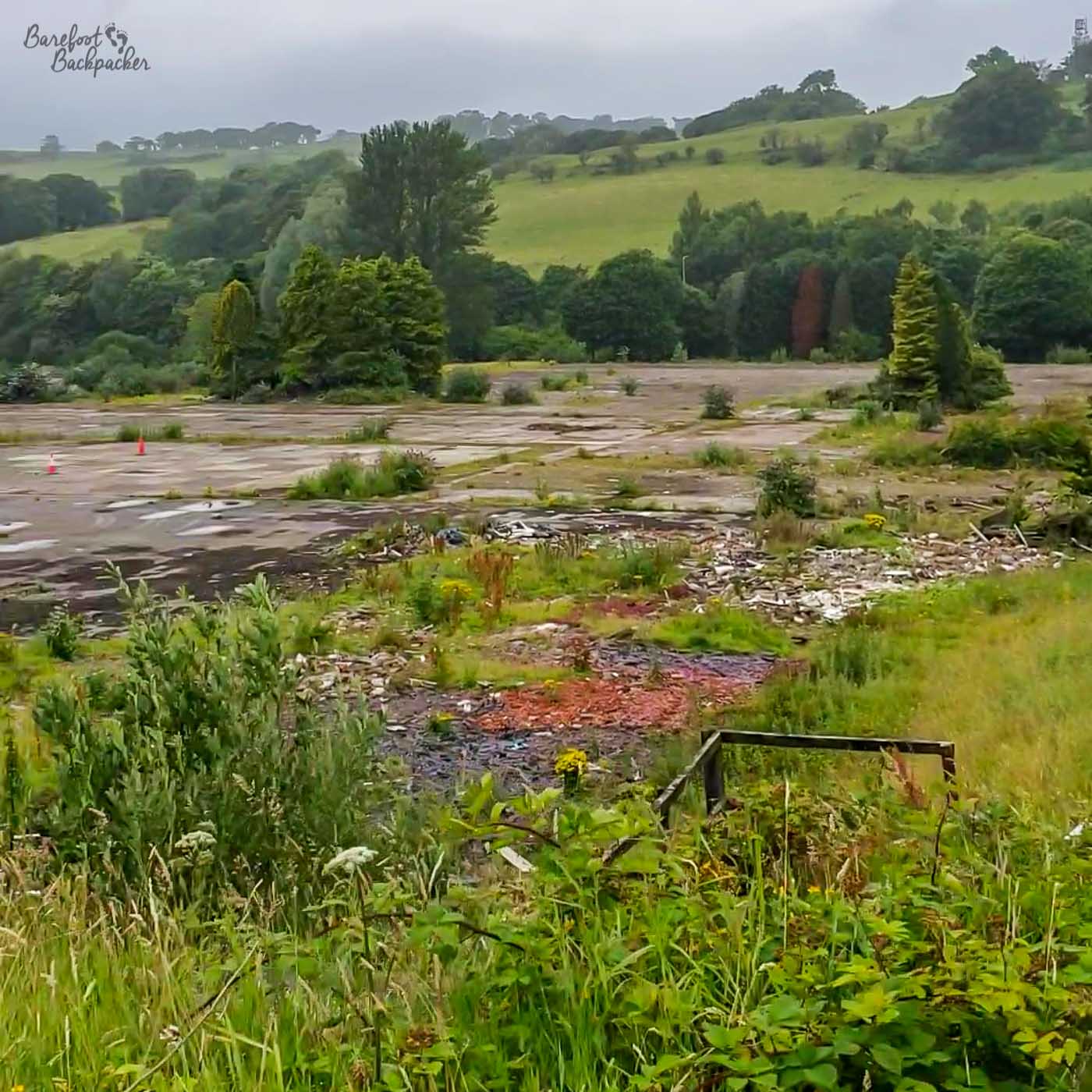
One of the sites of buildings at Spango Valley
By the entrance with the fence, there is a large sign saying if you want to go inside you need to call the security company, but on my visit there was no sign of any kind of patrol. I was expecting to get 20 metres in and chased by a guard dog, but I didn’t see anyone of anything, no CCTV, no patrols, not even a rat.

One of the entrances to the business park
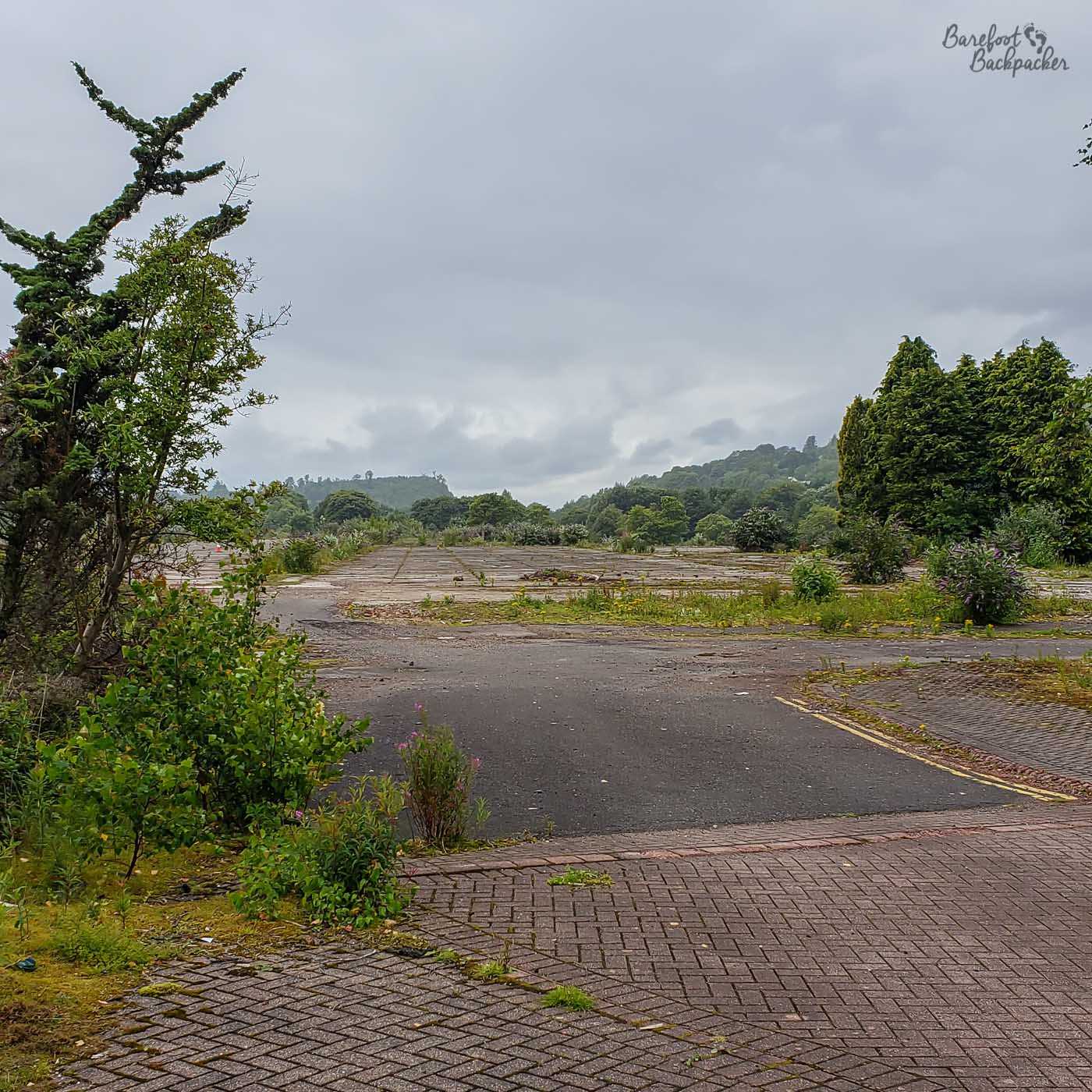
Another demolished office block. Definitely an open-plan working environment
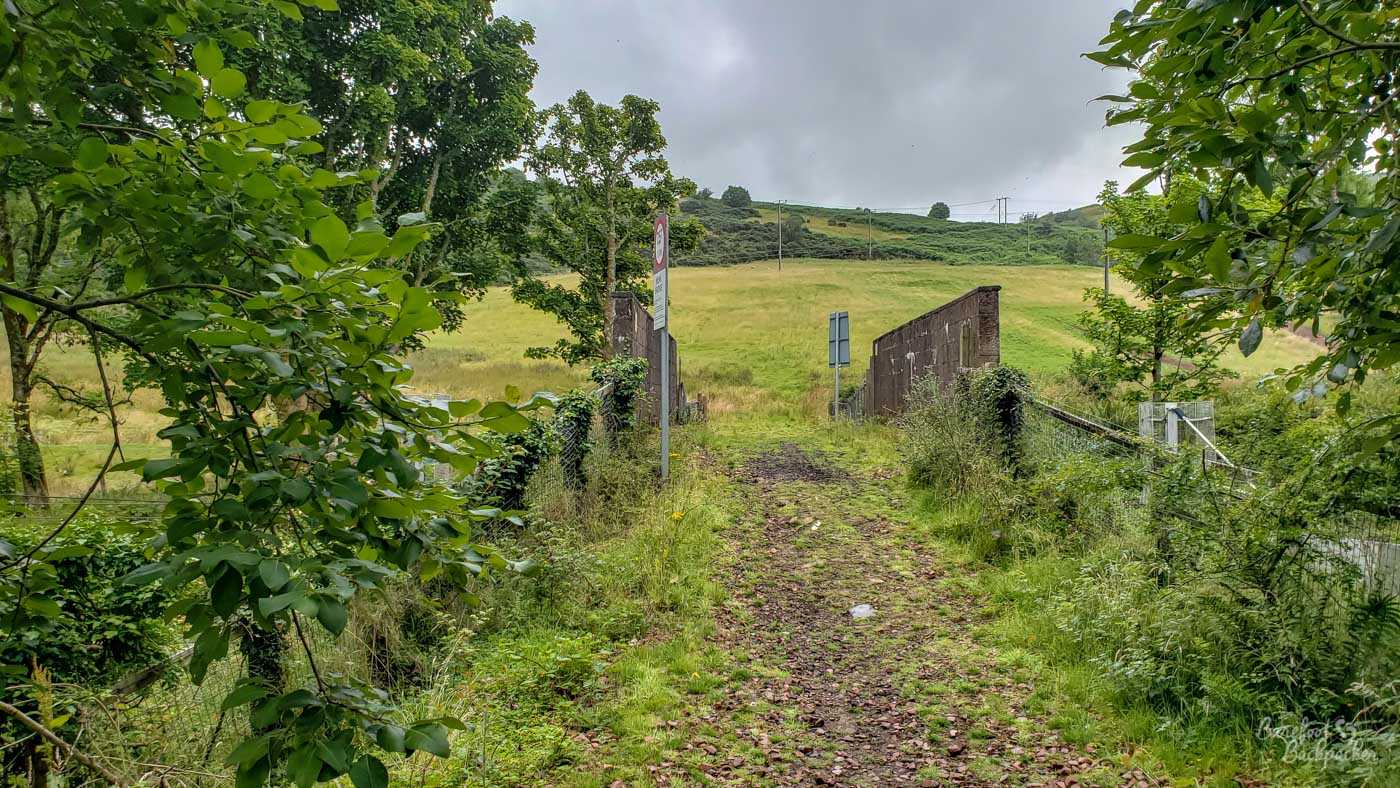
The bridge going over IBM (Halt) Railway Station. Access was on the right, where the fence is now
Disclaimer
For legal reasons, I ought to say I’m not influencing nor recommending you do this. Especially in a country that is not your own. Just because Spango Valley doesn’t seem to have security patrols doesn’t mean everywhere is equally as simple to access.
I am not a role model.